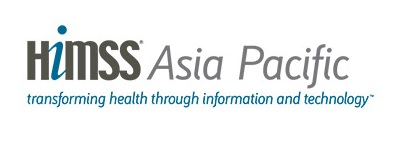The 6th Annual HIMSS-Elsevier Asia Pacific Digital Healthcare Award is open for submissions! Held as part of the HIMSS AsiaPac18 conference, the Award will be presented for the first time in Australia. Let’s take a look at past HIMSS-Elsevier Digital Healthcare Award success stories from Down Under.
This Global Award has attracted 178 submissions across 29 countries and 99 unique organisations since it began in 2013. Learn more about it here.
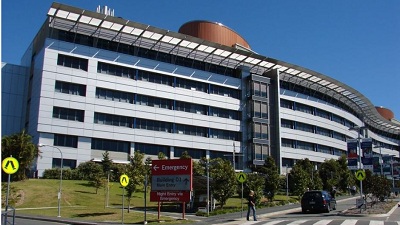 Princess Alexandra Hospital, Brisbane, Queensland
Princess Alexandra Hospital, Brisbane, Queensland
Implemented in March 2017, Prince Alexandra Hospital (PAH)’s integrated EMR (ieMR) was a 5th Year Special Winner under the Outstanding ICT Innovation Award Category for the HIMSS-Elsevier Digital Healthcare Award 2017.
Using intelligent analytics as a driver for change, the ieMR provided rich data to assist healthcare providers with real-time and near real-time access to clinical and operational information to improve the quality and efficiency of care.The data analytics project which was co-led by clinicians and data analysis experts, produced interactive dashboard prototypes to extract clinically meaningful data from the ieMR and presented the information in a way that was understood by clinicians.
Some of the beneficial clinical and operational outcomes include:
- Reduction in Emergency Department re-admissions by 45%
- Reduction in pathology turnaround time in the Emergency Department across all types of tests by 5 – 21% and across hospital average by 22% Increase in rapid response by 45%
- Reduction in cardiac arrests (15 fewer than predicted)
Royal Children’s Hospital, Melbourne, Victoria
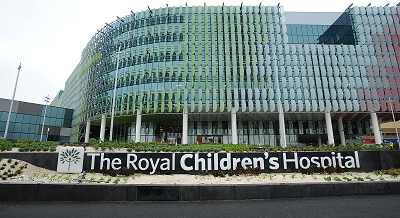 A nominee for the Outstanding ICT Innovation Award Case Study Category for the HIMSS-Elsevier Digital Healthcare Award 2017, the Whatsapp Go Live Project by the Royal Children’s Hospital (RCH) Melbourne began as an experiment to connect EMR Super Users and EMR experts. Providing EMR ‘know-how’ via the Super User network reduced the calls to Help Desk and generated a positive impact on the build team’s ability to resolve tickets. In the first three weeks, the ticket resolution rate was at well over an unprecedented 90%.
A nominee for the Outstanding ICT Innovation Award Case Study Category for the HIMSS-Elsevier Digital Healthcare Award 2017, the Whatsapp Go Live Project by the Royal Children’s Hospital (RCH) Melbourne began as an experiment to connect EMR Super Users and EMR experts. Providing EMR ‘know-how’ via the Super User network reduced the calls to Help Desk and generated a positive impact on the build team’s ability to resolve tickets. In the first three weeks, the ticket resolution rate was at well over an unprecedented 90%.
The successful use of social media has continued into the business as usual environment and continues to be used for end-user support and as a channel of communication between members of the EMR team
Sydney Children’s Hospital Network (SCHN), Sydney, New South Wales
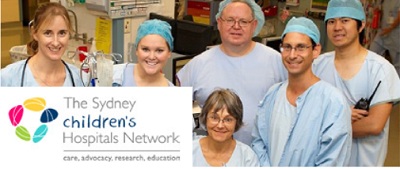 Implemented in May 2017 by the Sydney Children’s Hospital Network (SCHN), the My Health Memory (MHM) outpatient mobile phone application (app) was also another nominee for the Outstanding ICT Innovation Award Case Study Category for the HIMSS-Elsevier Digital Healthcare Award 2017. The MHM app is a patient facing portal that is integrated with the Network’s electronic medical record (eMR).
Implemented in May 2017 by the Sydney Children’s Hospital Network (SCHN), the My Health Memory (MHM) outpatient mobile phone application (app) was also another nominee for the Outstanding ICT Innovation Award Case Study Category for the HIMSS-Elsevier Digital Healthcare Award 2017. The MHM app is a patient facing portal that is integrated with the Network’s electronic medical record (eMR).
The MHM App provides patients, families and proxy carers access to communicate with staff via the secure messaging tool, embedded into the eMR (Cerner) the communication conversation once complete automatically becomes a note in the eMR supporting shared care.
App users can also view appointment schedules, receive notifications related to the specific appointment type, request appointment reschedules and participate in telehealth conferences, and make their own notes. Carers can use the App to manage the care of multiple children and document personal information in the “about me” profile section of the App.
Fiona Stanley Hospital, Perth, Western Australia
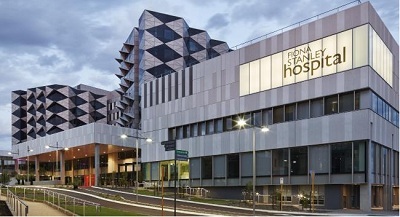 For the HIMSS-Elsevier Digital Healthcare Award 2016, Fiona Stanley Hospital’s (FSH) (Perth, Australia) Telehealth Team submitted a case study of their data-driven approach towards telehealth services .
For the HIMSS-Elsevier Digital Healthcare Award 2016, Fiona Stanley Hospital’s (FSH) (Perth, Australia) Telehealth Team submitted a case study of their data-driven approach towards telehealth services .
The new method involved using data analysis to identify rural patients who might be suitable for a remote consultation rather than a face-to-face visit at FSH. Particular emphasis was given to Indigenous Australians, socioeconomically disadvantaged people, people living in rural and remote areas as well as those with disabilities, who can benefit the most from telehealth services.
Results from the data-driven approach include:
- Increased telehealth usage by 325% from approximately 80 appointments per month to over 340
- Did not attend rate at 11% compared to the average outpatient clinic rate of 30%
- Saved patients a total of 2762 days away from home
St Stephen’s Hospital Hervey Bay, Hervey Bay, Queensland
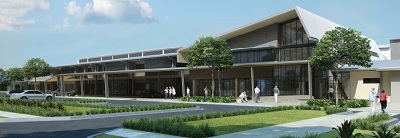 St Stephen’s Hospital in Hervey Bay (SSHB) was a recipient of the Outstanding ICT Achievement Award for the HIMSS-Elsevier Digital Healthcare Award in 2015 for its eHealth Unite Project. The eHealth initiative for SSHB consisted of the development, procurement, purchase, supply, installation configuration, testing, implementation and commissioning of IT equipment, software and associated workflows in the new hospital building. SSHB’s end-to-end solution consists of 29 Cerner applications, 20 integrated devices and five major interfaces including: Closed-loop medication management, EMR and clinical interface and an integrated patient system
St Stephen’s Hospital in Hervey Bay (SSHB) was a recipient of the Outstanding ICT Achievement Award for the HIMSS-Elsevier Digital Healthcare Award in 2015 for its eHealth Unite Project. The eHealth initiative for SSHB consisted of the development, procurement, purchase, supply, installation configuration, testing, implementation and commissioning of IT equipment, software and associated workflows in the new hospital building. SSHB’s end-to-end solution consists of 29 Cerner applications, 20 integrated devices and five major interfaces including: Closed-loop medication management, EMR and clinical interface and an integrated patient system
Some of the initial benefits of the project include:
- An average of 87% for clinic adoption rates two weeks post opening and have remained consistently high even without registrars onsite
- The Hospital Administration Booking System (HABS) has improved the time required to admit a patient from 10 minutes to two minutes, demonstrating a saving of eight minutes per hospital admission
Macquarie University Hospital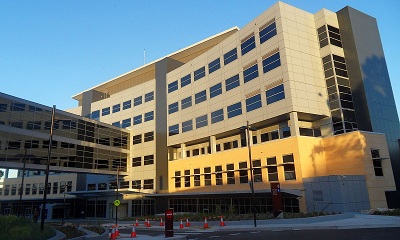 Macquarie University Hospital (MUH) submitted their case study of being a market leader in digitalising the healthcare environment for the HIMSS-Elsevier Digital Healthcare Award in 2013.
Macquarie University Hospital (MUH) submitted their case study of being a market leader in digitalising the healthcare environment for the HIMSS-Elsevier Digital Healthcare Award in 2013.
A suite of applications was implemented to enable a seamless patient journey from pre-admission through to discharge was deployed throughout the hospital. Staff efficiency and centralised organizational data has been managed through key applications housed on enterprise class hardware in a virtualised environment across two data centres.
The clinical systems provide a complete, secure EMR across all the functions of the hospital from inpatient management to device integration and business intelligence.
MUH also provides additional training avenues for staff through utilising eLearning facilities. The “log on”, however, adds another step and some time to each process as staff move through their daily activities.
MUH has put in place a number of initiatives to reduce this burden on those processes and staff:
- A “Single Sign On” utility automatically signs in to core clinical systems and brings patient context between them
- Sub “10-second” log on has been achieved at all bedside cockpits and rolling out to some workstations
- Tablets have been trialed successfully for high-speed / volume processes such as medication rounds
We are inviting all healthcare providers in Australia and the APAC region to submit your best case studies for the HIMSS-Elsevier Asia Pacific Digital Healthcare Award. Categories open for submission are: Outstanding ICT Achievement and Outstanding ICT Innovation. Submit and showcase your projects here



















